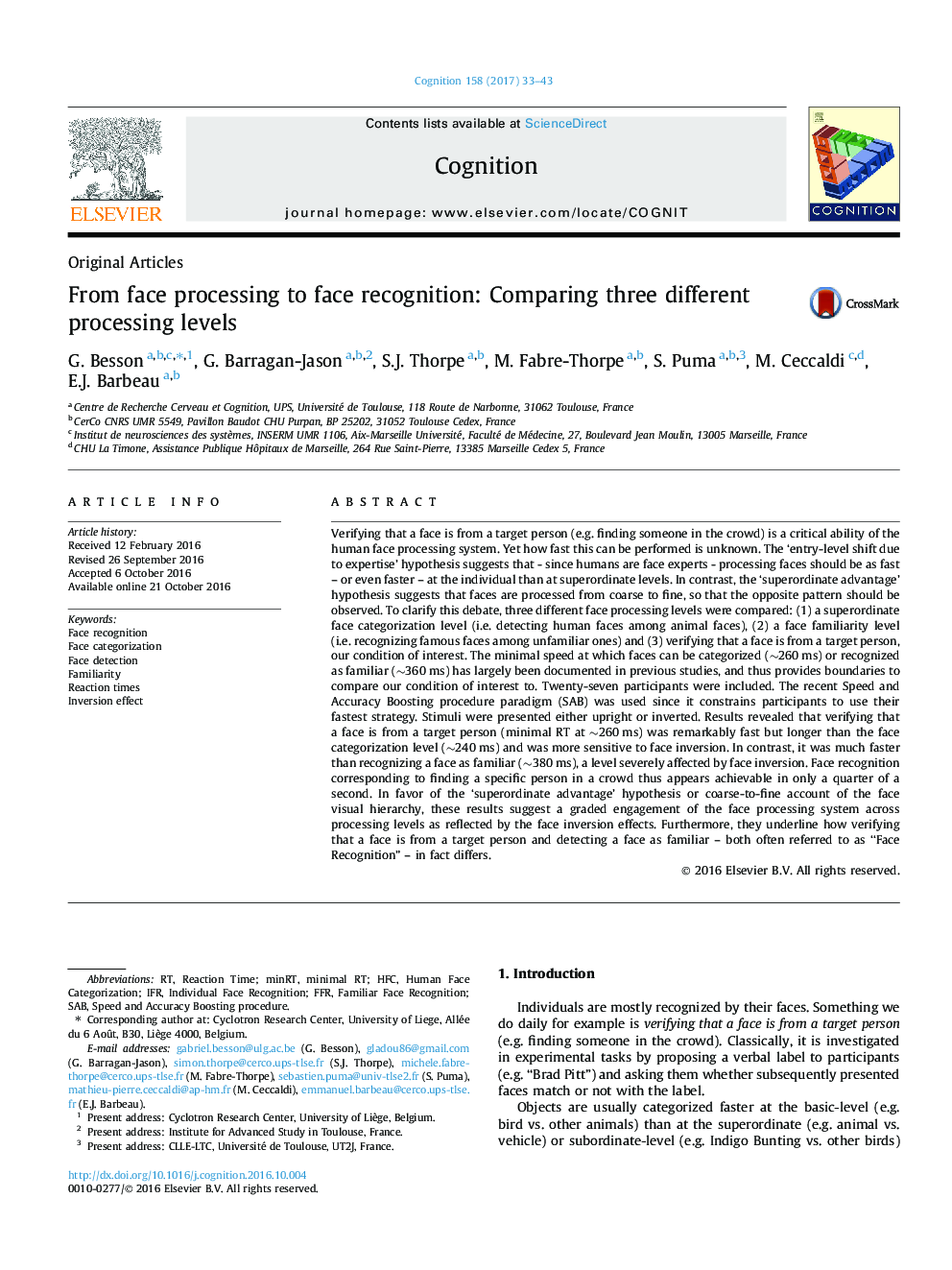| کد مقاله | کد نشریه | سال انتشار | مقاله انگلیسی | نسخه تمام متن |
|---|---|---|---|---|
| 5041679 | 1474109 | 2017 | 11 صفحه PDF | دانلود رایگان |
Verifying that a face is from a target person (e.g. finding someone in the crowd) is a critical ability of the human face processing system. Yet how fast this can be performed is unknown. The 'entry-level shift due to expertise' hypothesis suggests that - since humans are face experts - processing faces should be as fast - or even faster - at the individual than at superordinate levels. In contrast, the 'superordinate advantage' hypothesis suggests that faces are processed from coarse to fine, so that the opposite pattern should be observed. To clarify this debate, three different face processing levels were compared: (1) a superordinate face categorization level (i.e. detecting human faces among animal faces), (2) a face familiarity level (i.e. recognizing famous faces among unfamiliar ones) and (3) verifying that a face is from a target person, our condition of interest. The minimal speed at which faces can be categorized (â¼260Â ms) or recognized as familiar (â¼360Â ms) has largely been documented in previous studies, and thus provides boundaries to compare our condition of interest to. Twenty-seven participants were included. The recent Speed and Accuracy Boosting procedure paradigm (SAB) was used since it constrains participants to use their fastest strategy. Stimuli were presented either upright or inverted. Results revealed that verifying that a face is from a target person (minimal RT at â¼260Â ms) was remarkably fast but longer than the face categorization level (â¼240Â ms) and was more sensitive to face inversion. In contrast, it was much faster than recognizing a face as familiar (â¼380Â ms), a level severely affected by face inversion. Face recognition corresponding to finding a specific person in a crowd thus appears achievable in only a quarter of a second. In favor of the 'superordinate advantage' hypothesis or coarse-to-fine account of the face visual hierarchy, these results suggest a graded engagement of the face processing system across processing levels as reflected by the face inversion effects. Furthermore, they underline how verifying that a face is from a target person and detecting a face as familiar - both often referred to as “Face Recognition” - in fact differs.
Journal: Cognition - Volume 158, January 2017, Pages 33-43
